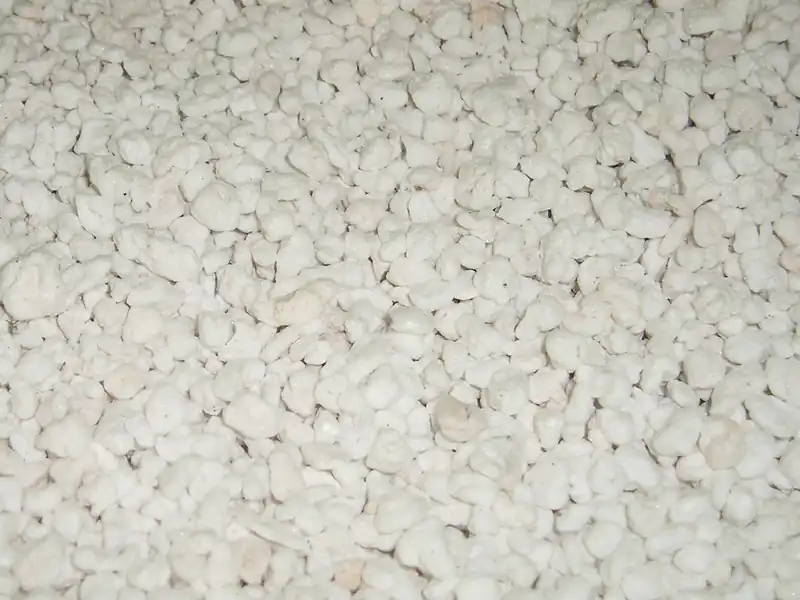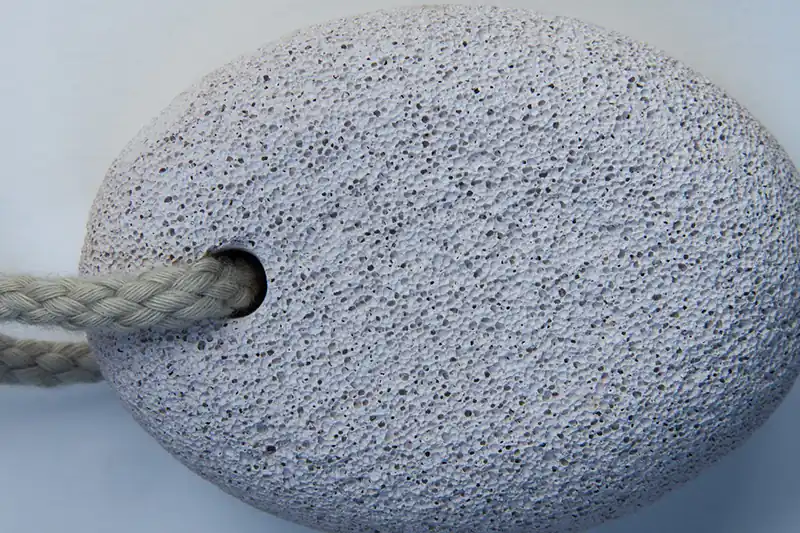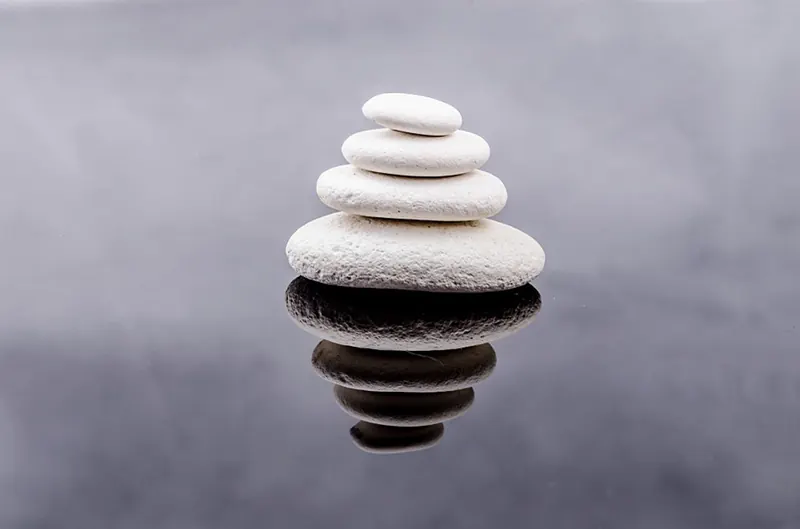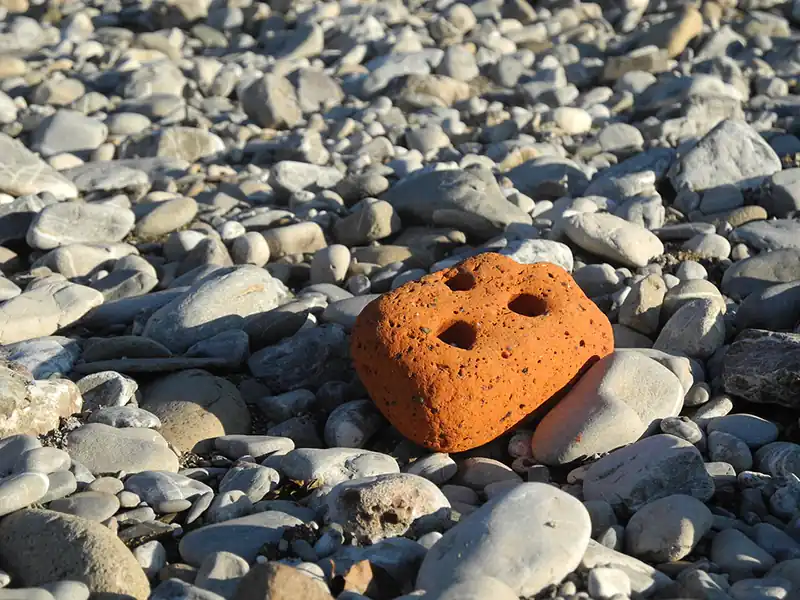Which Bonsai Soil Is Best?
Pumice vs. Perlite
When you’re looking for the best bonsai soil, the question often arises about which is better between pumice and perlite. While they only have a few things in common, one has more benefits than the other. It helps when deciding which is the top substrate for your miniature tree.
To help with the pumice vs. perlite debate, we’ll look at what each one is, check the main difference, show you some pros and cons, and also reveal if you can use any substitutes. We want to ensure that you have all the facts before buying either of them.

What is a Pumice?
Pumice is an element you’d add to bonsai soil to assist with aeration and drainage. It’s made from volcanic rock, but you’ll find it in small sizes that assist with being lightweight. The material is porous in nature, which is how you find it in its natural environment.
Besides its use in bonsai soil, there are plenty of other applications. For example, many people use it as a top-dressing above the soil in gardens and bonsai containers to prevent evaporation. It’s also seen as decorative pebbles when designing a miniature landscape. In the construction industry, they use it as a form of insulation.
What is Perlite?
As perlite is a mineral that’s created from volcanic glass, it has more of a sponge nature. There’s about 70% silicon dioxide in it, while the other components include iron oxide, sodium oxide, potassium oxide, and aluminum oxide. Once the substrate is processed through human-made devices, it’s also porous.
Since it aids so much with aeration, you’ll usually find perlite in succulent or bonsai pots that don’t need as much water retention. A few examples include Crassula and Jade trees that are succulent in nature but still classified as bonsais. It’s also useful in hydroponics.

Pumice vs. Perlite: What are the Main Differences and Similarities?
You may have noticed a few differences between pumice and perlite in the descriptions above, but there are plenty more. If you don’t feel like reading all of it, here’s a complete comparison TL;DR breakdown.
Pumice vs. Perlite
Pumice
Perlite
Horticultural Uses
Bonsai, succulents, insulation, garden toppings, clay improvement
Bonsai, succulents, decorations
Weight
Heavier
Lighter
Colors
White, blue/grey, cream, green-brown, black
Snowy white, grey white, dark grey, black
Water Retention
Low water retention
Low water retention
Manufacturing Process
Naturally formed
Crushed and heated
Grades
Coarse, regular, fine, very fine
Super coarse, coarse, medium, fine
Availability
Less available
More available
Pricing
Expensive
Cheaper
Eco-friendliness
Friendly to humans and environment
Leaves fine particles that can be hazardous
Better for Bonsais/Succulents
Better where weight and more aeration is needed
Better where less weight and decoration is needed
Horticultural Uses
Both pumice and perlite provide aeration in the soil while aiding with drainage. For the most part, they’re used with bonsai soil or succulents where the water needs to drain quickly. So there are many similarities in this regard.
However, pumice has a wider application when it comes to garden soil and forms of insulation. It also has better application when used in conjunction with clay and sandy soil, helping to spread the particles for improved drainage and aeration.
Which is heavier: Pumice or Perlite?
Despite both being porous in nature, pumice is heavier than perlite. It’s ideal if you need to add extra weight to your bonsai pot so it doesn’t fall over. It also won’t disperse into the wind like perlite, so you can use it outdoors. It’s also exceptional for cascade bonsais where you need to keep the tree in place.
That doesn’t mean that perlite’s lightweight nature isn’t without its advantages. If you keep your bonsais inside where it’s protected from the elements, you can still use it. It’s perfect for small pots where you don’t want too much weight on the roots of tiny trees. You can also use it as a decoration in a bonsai forest.
Color Variations
There are a few colors that pumice and perlite have in common. These mostly include grey, white, and black. Where they differ is that pumice has slight variations of blue, green, and brown. It all depends on your taste and how you’d like the soil to look if you’re using it on the surface.
Water Retention
Neither pumice nor perlite is known for retaining water, which is why they do well with succulent bonsais. Even though pumice is heavier and has several grades, you’ll struggle to use them to keep any moisture in the soil. The only way you can do so is with a smaller mix in the bonsai soil where you need a bit more aeration. You’d be better off with vermiculite.
Manufacturing Pumice and Perlite
Pumice is the winner in this category, as the porous stones form naturally from small gas bubbles found in lava. When collected, it’s sorted into various grades and sizes so it can easily be sold commercially. There’s no intervention or processing needed.
Perlite, on the other hand, needs to be crushed after mining and then heated at high temperatures to get the result you see in the stores. You’ll notice the effect of this difference in many of the pumice vs. perlite comparisons below.
Grades
The only two grades that pumice and perlite have in common are coarse and fine. Pumice also has regular and very fine sizes, which can be helpful in many applications. Perlite has super coarse and medium, which is why you’ll find large and small pebbles. For the grades, it all depends on what you’re looking for.
Availability
In the United States, perlite is more available than pumice thanks to mining operations. While many countries mine it worldwide, the US is seen as the top exporter of the product. It’s also more available in the stores due to this reason.
Cost Differences
You’d think the crushing and heating processes of perlite would make it more expensive, but the opposite is true. Due to its abundance in many countries like the US, it’s more affordable than pumice. Of course, it depends on where you live and if you need perlite imported. Where you find more pumice in its natural state, it may cost you less.
Friendly to the Environment
The unfortunate side of crushing perlite into various grades is that the stones leave fine particles when you handle them. Even if you soak and wash them, there’s still the chance that friction and root movement in the soil will cause more particles to break off.
While this can cause issues with your bonsai, you should be careful about inhaling any tiny particles that are floating in the air from handling. They can cause respiratory issues, especially with people that have asthma or bronchitis. If you still choose to work with perlite, you can consider buying an air purifier for your home.
Is Pumice or Perlite better for bonsais and succulents?
It depends on what you’re aiming for. If you want more decorative properties with less weight, then perlite is the one to go for. Pumice has more advantages than perlite in most categories, which is why we recommend it for bonsais in most instances. It’s also perfect where you need more weight in your pot.
Pros and Cons of Pumice vs. Perlite
As a summary of all the content we’ve provided above and to help you make a decision between perlite and pumice, here are the advantages and disadvantages of each one.
Pumice
Pros
- Friendly to the environment in its natural state
- Doesn’t need any mechanical processing
- Lightweight and porous
- Heavy enough that the wind can’t blow it away
- Helps with aeration and drainage
- More applications
Cons
- Not always readily available in many countries
- More expensive than perlite
- Low water retention
Perlite
Pros
- More affordable than pumice
- More available in most countries
- Better grades
- Helps with aeration and drainage
- Sterilizes soil and eliminates diseases
Cons
- Particles break off, which is hazardous to the environment
- Very light, so can easily be blown away
- Fewer applications
- Low water retention

Common Benefits of Perlite and Pumice for Bonsais
The reason pumice and perlite are excellent choices for bonsais and succulents is due to the benefits they share. As mentioned, they help with aeration in the soil. With the trees having tiny roots, they need help moving through the substrate. It’s easier when the soil isn’t clumped together, which is where these minerals come into play.
If you’re using clay or sandy soil due to the species you’re growing, pumice can assist with creating pockets for the roots to grow and breathe. Even with a standard mix, perlite can help to make sure the soil doesn’t clump together from overwatering. You can use both as a top, middle, or bottom layer.
As decorations, they both look splendid and appealing above the soil. They also aid with preventing soil from drying out too quickly due to evaporation. However, placing them as top-dressings means they won’t aid with water drainage within the soil itself.
The common variances in grades mean that you can choose what size pebbles you want for your bonsai. You should study the differences in size to see which ones are more suitable for your container or bonsai style. The grades also play essential roles when it comes to applying them to the correct layers in the substrate.
How to Use Pumice or Perlite with Bonsais
When you buy bonsai mixes from local or online stores, pay attention to the ingredients. In most cases, it will list pumice or perlite as one of the many ingredients. The other components usually include akadama, fine gravel, organic compost, and sometimes lava rock. That doesn’t mean it’s always included.
If you’re buying a standard soil mix with bark, you may want to add pumice or perlite to the mix based on your decision from this comparison guide. Usually, about 5 – 10% of the total soil volume will suffice, but it depends on the grades and where you’re placing it:
- Base level: helps with drainage only and prevents roots from growing through drainage holes
- Middle level in the soil: helps with drainage and aeration, and sometimes prevents diseases if applied properly
- Top level: Prevents evaporation and provides decoration and extra weight on the soil
To aid with fighting diseases, you can add nutrients and microbes that will keep the soil and roots healthy and strong. Some even have mycorrhizal fungi that are beneficial to some species, such as the Stone Pine. We call this process “supercharging” the soil.
Final Thoughts
It can be a tough decision in the pumice vs. perlite comparison, but we hope you have a better idea of which is better now. You’ll need to evaluate your situation, soil, bonsai species, and container to see which substrate will work the best for you. Feel free to leave any comments if you have an opinion on which one you prefer or if you have any questions. You can also chat with us on social media.
FAQs about Pumice vs. Perlite
Before you head out, we did find a few questions people ask about pumice and perlite. While we’ve answered many of these already, we’re going to summarize it here below. We’ll also add any queries you’ve sent us on social media or via email.
No, they are not. Pumice is a natural mineral made from bubbles in lava, while perlite is mined, crushed, and heated to form small stones. While they have many aspects in common, they are not the same product. They do, however, serve the same purpose.
Perlite is a lightweight object that easily floats to the surface when you water your bonsai. It can also leave fine particles in the air and soil. It’s ideal for succulent bonsai that need fast water drainage and not retention. Many people mix it with bonsai soil and other components to help with aeration and pH levels.
Pumice has a porous interior that makes it light and easy to use with bonsais. It’s hard to find in local stores due to how rare it is to find in the environment. That’s why you’ll pay more for pumice than perlite. Still, you can use it for succulent or drought-resistant bonsais that enjoy quick water drainage.
In most situations, we’d recommend pumice over perlite. It’s heavier, so you can use it to keep your bonsais in place. There are also more applications, and it’s friendly to the environment. However, it’s more costly due to perlite being more readily available. You can also use vermiculite if you need better water retention.
Yes, you absolutely can. While there are many differences between pumice and perlite, they serve the same function. Of course, you’ll need to look at the various grades and colors to see if they’ll benefit you and your small bonsais. Use the comparison table in this guide to make sure you want to change the substrate.
Pumice isn’t the only item you can use as a substitute for perlite. Some other items you can use include rice husks, bark, peat, calcined clay, granite gravel, and vermiculite. It all depends on the bonsai species and application as to which one will serve you better.
Perlite has the unfortunate habit of breaking off small particles and releasing them into the air during handling. It’s due to how it’s mined and crushed during the process of creating the small pebbles. It can cause issues with the respiratory system, which means people with asthma and other bronchial problems should keep away from it. Pumice doesn’t have this issue.
While both are lightweight, pumice is heavier thanks to its natural volcanic state. That means you can use it to keep your bonsais in place when there are strong winds. It’s also ideal for cascade bonsais when the trunk and foliage are heavier than the container.







